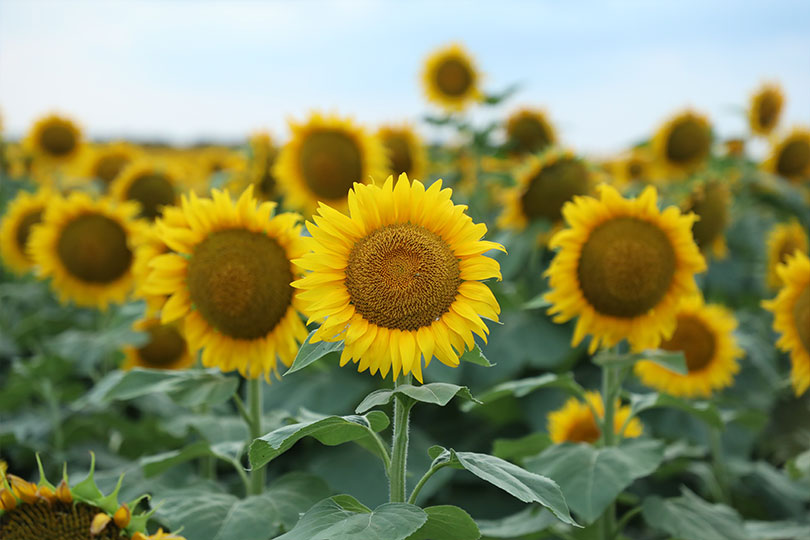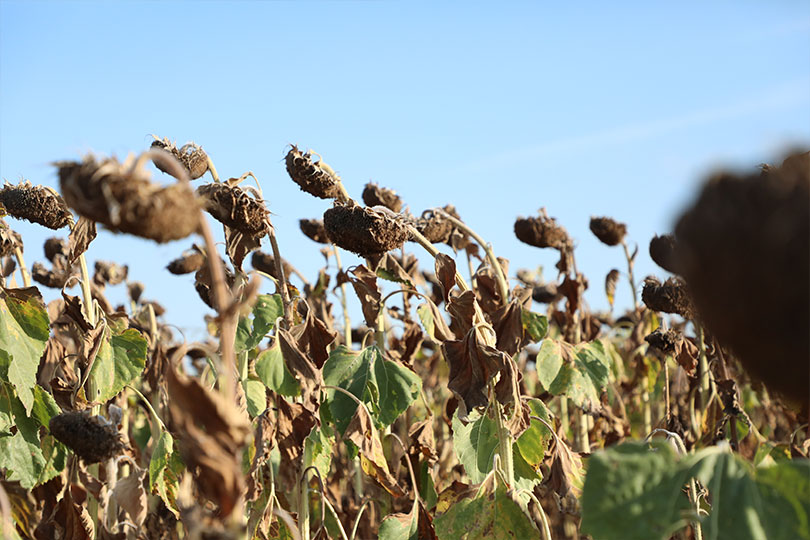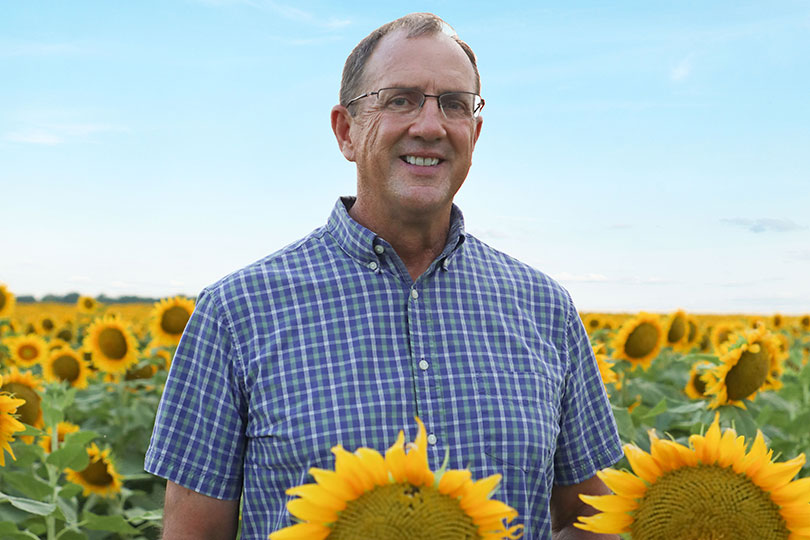By Shelby Shank
Field Editor
Sweeping acres of stunning, yellow flowers fill a field just 20 miles south of Dallas in the town of Ferris.
The blooming sunflowers grown by Scott Born are seasonal stunners, grabbing the attention of locals and other Texans passing through the area.
Born, who serves as Ellis County Farm Bureau’s president, has worked this land for 32 years. It’s a farm he started leasing while he was still working as an electrical engineer in Dallas.
“They were taking bids on it, and I just threw out a bid and somehow got it. I was still living in my apartment and working my engineering job. People told me I wasn’t going to have it for long because it would turn into houses,” Born said. “It’s been under threat of houses several times, but I’ve poured my life into this farm, and it’s been the bread and butter of my operation for many years.”
Born always wanted to farm. He grew up in Perryton, where his grandparents were farmers, and he would grow garden-size plots of wheat and sorghum. He pursued his engineering career for nine years before he made the decision to leave and farm full time.
“I worked my way up to 1,400 acres before I left my job. It came down to I had to do one or the other. I was farming at night after work. I used all my vacation days and weekends to plant and harvest,” he said.
Now, he farms 4,000 acres of wheat, corn and cotton across Ellis, Dallas and Kaufman counties. Plus, he’s growing one of the sunniest crops—sunflowers.
And he couldn’t be happier.
The flowers are named for the way they track the sun from east to west while they are growing.
Their big, healthy root systems reach deep in the soil to pull up nutrients, minerals and water. They’re ideal for growing in dry weather like the drought conditions that have gripped the state for several years.
“Sunflowers are very heat tolerant, and they’re drought tolerant, too. If you have good subsoil moisture, they don’t require a whole lot of moisture during the growing season to make a good crop,” Born said. “Sunflowers don’t like to get too wet. They like hot and dry with a little bit of water.”
That’s exactly what the growing season was like—a few rain showers early in the growing season followed by months of dry, hot weather.
Born plants the golden flowers during late March and early April. He grows about 540 acres of sunflowers with about 20,000 plants per acre.
The flowers begin to bloom in June. They stand bright and tall—a beautiful crop to admire.

Their striking presence is short lived, however. As the sunflowers mature, they begin to droop their heads, and the once vibrant, yellow petals will dry and fall off. The head of the flower remains with the black seeds.
“The pretty part doesn’t last long. It attracts a lot of people to take pictures, and we want them to enjoy the sunflowers. But we don’t want people to trespass, take the sunflowers out of the field or knock them down,” Born said.
It’s a problem many farmers who grow sunflowers face each year—losing portions of the crop to individuals trespassing for photos or to take flowers home with them.
But Born wants Texans to know that growing any crop, even sunflowers, takes skill.
“I always tell people the thing that makes the difference between making a mediocre crop and a really good one is the little details. The depth you planted, the day you planted and the day you sprayed can make a really big difference,” Born said. “It’s not easy, and I think a lot of people are under the misconception that farming is a lot easier and requires a lot less knowledge and thought and experience than it really does.”

He begins to harvest his sunflowers in late August. The flowers are harvested with a combine that has been adapted to separate the seeds from the sunflower head.
Born aims for the sunflowers to yield about 2,000 pounds per acre.
Once harvested, the seeds are bagged and sold at stores for bird seed.
“It’s fun to watch them grow,” he said. “These sunflowers just amaze me that all of this yellow can somehow come out of black dirt.”
The crop isn’t without its challenges, though.
Because it’s not a traditional crop, Born said finding herbicides to control weeds can be difficult, as well as getting equipment set up for harvest.
The crop does, however, allow him to spread out his risk, which is always important in farming.
“The companies that were buying them for the oil seed market were surprised that we could grow some really high oil content sunflowers here in Texas, higher even than some places that traditionally grow them like South Dakota,” Born said. “So, they were interested in them, too, I think because ours come off sooner. Especially in years where they are short on sunflowers, companies would offer us a pretty good price to grow sunflowers because they’re going to come off the field in August. And so for me, it’s a way to spread my risk.”
Farming is always a gamble with Mother Nature calling the shots, but Born takes great pride in what he does.
And he hopes he can continue farming for years to come, despite the urban sprawl that’s taking place across Texas.
“I’ve probably lost more land in the last two or three years than I have in the 30 put together before that,” he said. “There’s just a lot of development going on in this area.”
His roots run deep, though. And he’ll keep planting and harvesting crops, like sunflowers, as long as he can.

